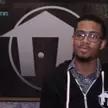Bobby Kotick says Switch successor will be closer to Xbox One & PS4 performance
We learned more about Nintendo's heavily rumored Switch successor during the Microsoft and FTC trial.
Arguably no piece of video game hardware has been the subject of more rumors and speculation in recent years than the successor to the Nintendo Switch. While Nintendo has been incredibly tight-lipped about what comes after the Switch, industry players have spent years theorizing about the upcoming console’s hardware and software offerings. During Microsoft’s FTC trial, Activision Blizzard CEO Bobby Kotick claimed that the next Nintendo console’s performance and power will be similar to that of the PS4 and Xbox One consoles.
It was during the ongoing Microsoft FTC trial that Activision Blizzard CEO Bobby Kotick was called to the stand. He talked about Microsoft’s recent deal to bring Call of Duty games to Nintendo consoles, revealing that he read about the agreement in the news. Even more notably, the embattled CEO had some intriguing details to share about Nintendo’s rumored Switch successor. After an email between Bobby Kotick and Nintendo President Shunturo Furukawa was shown in court, Kotick shared that he expects the next Nintendo console’s specifications to have “closer alignment” to the PS4 and Xbox One generation of consoles.

Source: Nintendo
Kotick also expressed regret for not bringing Call of Duty games earlier. He stated that Activision had the opportunity to do so, but wasn’t confident in the hybrid console prior to its release. The Switch went on to become the third best-selling console of all time.
It’s worth noting that while Bobby Kotick has expectations for what the Nintendo Switch successor’s power will be, he admits that he does not have the specs. That said, the speculation makes sense. Nintendo consoles have not been on-par with the latest Xbox and PlayStation hardware, and The Big N hasn’t shown any interest in competing when it comes to hardware fidelity. We’ll continue to follow and report the biggest stories out of the Xbox and FTC trial.
-
Donovan Erskine posted a new article, Bobby Kotick says Switch successor will be closer to Xbox One & PS4 performance
-
-
PS4/Xbox One performance would be in line with a Steam Deck, except with much better battery life and portability. It would also presumably have DLSS as well as FSR options.
Performance obviously wouldn't be 1:1 since CPU performance would probably be better than the 2013 consoles while GPU would be in line, but it should be close.
Quality at higher resolutions would depend on how much space on the SoC is devoted to DLSS, but we'll see. All it really needs to hit is 1080p since games that are native (Smash, Splatoon, Portal 2) look terrific even on a big 77" 4K. Its when a game is 720p or lower when you get into real trouble. DLSS to carry an internal 720p/1080p render into 1440p/4k would be nice!-
-
One is a modified laptop APU that draws 15W while the other is an SoC that will presumably draw around 3W, and again will probably have modern features like DLSS.
It really isn't the same thing when we're talking about power efficiency, and then there's the advantages of optimizing towards a fixed platform.-
-
Can Nvidia supply something that does that at around 3W?
Its important to remember that the PS4 Pro and Xbox Series X didn't really contribute to scene complexity, just output resolution, and in the case of the PS4 Pro it did that in part with upscaling tricks like checkerboard rendering.
The real question is if we could perceptually be seeing something closer to a PS4 Pro if DLSS is available, the quality of its implementation, and how well the software supports it if its available. I think things like scene complexity will be much more of a fixed quantity like it was with PS4 and PS4 Pro.
If the next-gen Switch gets to 1440p or 4k output it will have to be on the back of upscaling technology, because even with a modern 7nm or 5nm manufacturing process more pixels = more heat. Even on the desktop just look at how many transistors are dedicated just for resolution and temporal upscaling.
-
-
-
-
-
-
On the back of DLSS, certainly. Even the PS4 Pro used checkerboard rendering rather than doing full native 4k. In terms of scene complexity there really wasn't a difference between the 2013 consoles and the 2016 4K models. With Nvidia involved I have to imagine that some sort of DLSS will be involved.
The question for me is how they will allocate CUDA and tensor cores in a gaming oriented SoC, because they really don't have anything like that now like they did with the 2016 Shield TV way back when the Switch was announced.
-
-
-
-
-
-
Did you have any consoles before? Its the tail end of a tablet/hybrid console built on already 3 years old hardware at release time.
But almost all games I bought from them were 60fps and they were absolute standout titles like metroid dread/prime/odyssey/dk/bayo1+2/bowsers fury+3dworld/mk8 etc same for 3rd party shit like ninja gaiden sigma, hollowknight, etc
botw was 30fps and it ran like 6 hours on a mobile device. You get to play persona 5 on the go.
Do you guys remember how garbage the ps3&360 era was? The ps4/xbone basically became decent with their pro/x releases. Try running half the top titles on the ps4 and watch that thing howl like a wounded elk locking in somewhere between 25-40 frames.
-
Owned every Nintendo console except wii u, owned every xbox except the first and owned a ps3.
The portability of Switch means nothing to me, it's always played docked.
I think I've just changed in preferences over time. And fwiw, I didn't enjoy BOTW and think it vastly overrated, and TOTK isn't much better on that regard
-
-
-
-


